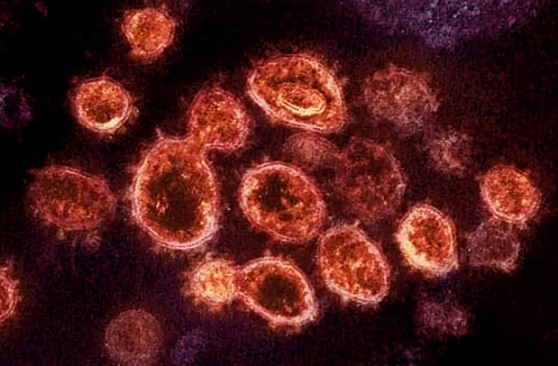Nikhil Prasad Fact checked by:Thailand Medical News Team Jan 06, 2025 11 months, 2 weeks, 5 days, 19 hours, 48 minutes ago
Medical News: Human metapneumovirus (HMPV) is a significant respiratory virus that belongs to the Paramyxoviridae family, alongside respiratory syncytial virus (RSV) and parainfluenza viruses. It primarily affects infants, young children, and immunocompromised individuals, causing lower respiratory tract infections such as bronchitis and pneumonia. Despite its global impact, much remains unknown about how HMPV interacts with human cells at a molecular level. A groundbreaking study led by researchers from the University of Texas Medical Branch, Zhejiang University, and the University of Michigan delved into this virus's influence on small noncoding RNAs (sncRNAs) in airway epithelial cells.
 HMPV Alters Small Noncoding RNA Expression in Airway Epithelial Cells
Decoding Small Noncoding RNAs
HMPV Alters Small Noncoding RNA Expression in Airway Epithelial Cells
Decoding Small Noncoding RNAs
Small noncoding RNAs are crucial regulators of gene expression and include various types such as microRNAs (miRNAs), small interfering RNAs (siRNAs), and tRNA-derived RNA fragments (tRFs). These molecules play pivotal roles in cellular processes, including antiviral defense mechanisms. This
Medical News report explores how HMPV disrupts the balance of sncRNAs in human cells, potentially revealing new therapeutic targets.
Key Findings of the Study
Using high-throughput sequencing and advanced molecular techniques, the researchers uncovered dramatic shifts in sncRNA expression in airway epithelial cells infected with HMPV. The team employed A549 cells - a human airway epithelial cell line - to map the sncRNA profiles post-HMPV infection. Here are the study’s major findings:
-MicroRNA Dominance: The study revealed that miRNAs dominated the sncRNA landscape in infected cells, with their relative abundance increasing significantly over time. In uninfected cells, miRNAs accounted for approximately 67% of sncRNAs. However, after 15 hours of infection, this figure surged to nearly 87%.
-Dynamic Changes in miRNA Expression: A total of 201 miRNAs showed significant expression changes. Among these, 142 miRNAs were upregulated, while 32 were downregulated. Notably, miR-30a and miR-16 remained unaffected in cells infected with wild-type HMPV but exhibited increased expression when infected with a mutant strain lacking the M2-2 protein. This suggests that the M2-2 protein modulates specific miRNA pathways.
-Novel Viral sncRNAs Identified: The researchers identified 22 HMPV-derived sncRNAs. These sncRNAs were predominantly derived from the viral antigenome, indicating that HMPV may produce specific RNA fragments to manipulate host cell functions. For instance, fragments from the P and L genes of HMPV were detected and validated using northern blot analysis.
-Functional Insights Into let-7f: The miRNA let-7f emerged as a significant regulator during HMPV infection. Unlike its role in RSV infections, where it promotes viral replication, let-7f inhibited HMPV replication. This unique behavior highlights how different vir
uses exploit or counteract host miRNAs differently.
-Role of the M2-2 Protein: The M2-2 protein, a critical component of HMPV, was found to suppress the induction of specific miRNAs, including miR-30a and miR-16. Deleting the M2-2 protein enhanced the expression of these miRNAs, implicating M2-2 as a key regulator of host miRNA responses.
Implications of the Findings
The study provides a detailed map of how HMPV interacts with the sncRNA machinery of airway epithelial cells. By altering sncRNA expression, HMPV can suppress host immune responses and promote its replication. These findings open avenues for developing antiviral therapies that target these molecular pathways. For example, designing drugs to inhibit viral sncRNAs or restore normal miRNA levels could offer novel strategies to combat HMPV infections.
Broader Context and Future Directions
The insights from this study also suggest that viral sncRNAs might serve as biomarkers for diagnosing HMPV infections. Furthermore, the ability of HMPV to differentially regulate miRNAs compared to RSV underscores the complexity of host-virus interactions. Future research could explore the therapeutic potential of miRNA mimics or inhibitors in mitigating HMPV’s effects.
Conclusions
The research sheds light on the intricate molecular interplay between HMPV and human cells. By manipulating sncRNAs, HMPV not only evades the host's immune defenses but also creates a favorable environment for its replication. These findings provide a foundation for further studies on the role of sncRNAs in viral pathogenesis and potential antiviral strategies. The comprehensive profiling of sncRNAs offers a valuable resource for the scientific community to explore new dimensions of viral infections.
The study findings were published in the peer-reviewed journal: Molecular Therapy - Nucleic Acids.
https://www.sciencedirect.com/science/article/pii/S2162253116303055
For the latest HMPV News, keep on logging to Thailand
Medical News.
Read Also:
https://www.thailandmedical.news/news/doctors-warn-that-hmpv-can-trigger-deaths-in-children-with-covid-19
https://www.thailandmedical.news/news/influenza-positivity-rate-in-united-kingdom-rises-to-29-5-percent-hmpv-infections-also-rising
https://www.thailandmedical.news/news/three-month-old-female-infant-becomes-second-hmpv-case-in-bengaluru-india
https://www.thailandmedical.news/articles/hmpv-human-metapneumovirus
